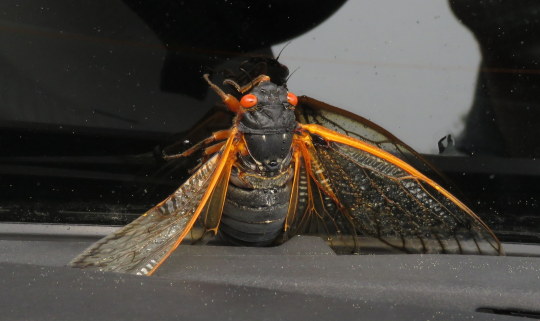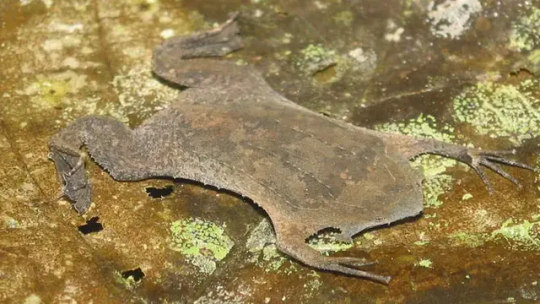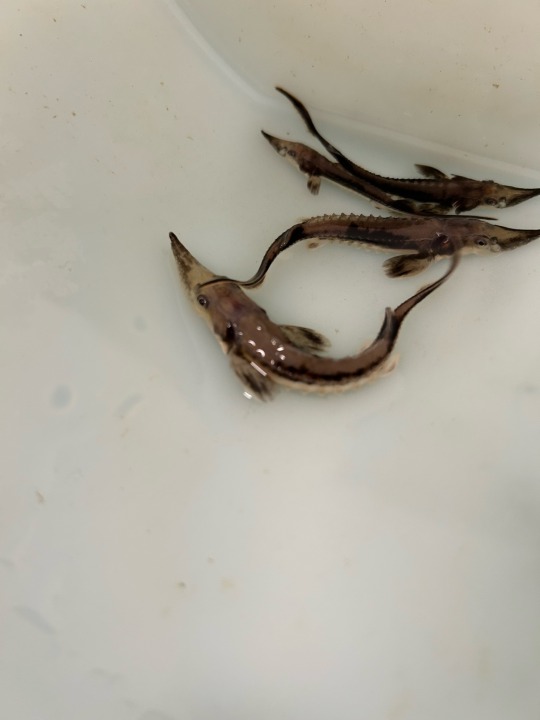not a professional just someone who like plants but hopefully someday I will be a professional in some field of study.I have a broad definition of nature
Don't wanna be here? Send us removal request.
Text

Jens is on the Hand with his Pineapple Beard of Proud today! Do you have any Leftover Dinner he can mind for you?
143 notes
·
View notes
Text
I LOVE THE EEL-TAILED CATFISH AND THEREFORE IT SHOULD WIN
Round 3 - Actinopterygii - Siluriformes




(Sources - 1, 2, 3, 4)
Order: Siluriformes
Common Name: “catfish”
Families: 41 - Diplomystidae (“velvet catfishes”), Cetopsidae (“whale catfishes”), Nematogenyiidae (“Mountain Catfish”), Trichomycteridae (“pencil catfishes”), Callichthyidae (“armored catfishes”), Loricariidae (“suckermouth catfishes”/“plecos”), Scoloplacidae (“spiny dwarf catfishes”), Astroblepidae (“climbing catfishes”), Chacidae (“squarehead catfishes”), Plotosidae (“eeltail catfishes”), Ritidae (“velvet catfishes”), Ailiidae (ailiid catfishes), Horabagridae (“imperial catfishes”), Bagridae (“naked catfishes”), Akysidae (“stream catfishes”), Amblycipitidae (“torrent catfishes”), Sisoridae (sisorid catfishes), Pangasiidae (“shark-catfishes”), Siluridae (silurid catfishes), Kryptoglanidae (“Indian Cave Catfish”), Aspredinidae (“banjo catfishes”), Auchenipteridae (“driftwood catfishes”), Doradidae (“thorny catfishes”), Heptapteridae (“three-barbeled catfishes”), Phreatobiidae (“cistern catfishes”), Pimelodidae (“long-whiskered catfishes”), Pseudopimelodidae (“bumblebee catfishes”), Clariidae (“airbreathing catfish”), Heteropneustidae (“airsac catfishes”), Ariidae (“sea catfishes”), Anchariidae (“Malagasy catfishes”), Austroglanididae (“rock-catfishes”), Cranoglanididae (“armorhead catfishes”), Ictaluridae (“North American freshwater catfishes”), Lacantuniidae (“Chiapas Catfish”), Amphiliidae (“loach catfishes”), Malapteruridae (“electric catfishes”), Mochokidae (“squeakers”/“upside-down catfish”), Auchenoglanididae (“flatnose catfishes”), Claroteidae (claroteid catfishes), and Schilbeidae (“schilbeid catfishes”)
1 species without family: Conorhynchos conirostris
Anatomy: scale-less, either with armor plates or “naked”; most have prominent barbels; heavy, bony head; reduced swim bladder; most have a flattened head; unable to protrude their mouths; many larger species have chemoreceptors across their entire body; generally small, sometimes nonexistent eyes; defensive spines on the leading rays of their dorsal and pectoral fins, which are venomous in many species; use sounds to communicate
Diet: diverse array of diets between species, including large to small animals, detritus, and blood; most are bottom feeders
Habitat/Range: inland or coastal waters of every continent except Antarctica; more than half of all catfish species live in the Americas.
Evolved in: Late Cretaceous

Propaganda under the cut:
Siluriformes are the vertebrate order with the largest number of venomous species. Most species are not dangerous to humans, but members of the family Plotosidae and of the genus Heteropneustes have a powerful venom that may hospitalize humans who receive a sting. The Striped Eel Catfish (Plotosus lineatus) has a sting which can cause mild to severe reactions in humans, including death, though no human deaths have been recorded as a result of a Striped Eel Catfish sting.
Members of the Malapteruridae family lack the spines of other catfish, instead opting for the ability to generate electricity in defense. Some species can deliver a shock of up to 350 volts from their electric organs. Electric catfish are found in tropical Africa and the Nile River, where they were well-known by Ancient Egyptians. The Early Dynastic King Narmer (meaning “painful/raging/angry catfish”) was named after the animal, sometimes with the abbreviation of just a catfish symbol.
Catfish have one of the largest ranges in size within a single Actinopterygiian order. Many catfish are 12 cm (4.7 in) or less, but some reach truly massive sizes. Record holders include the Wels Catfish (Silurus glanis), the Mekong Giant Catfish (Pangasianodon gigas) (image 1), and the Piraíba (Brachyplatystoma filamentosum), which can all reach over 2 m (6.6 ft) long, with the Piraíba getting up to 3.6 metres (12 ft) long and weighing 200 kilograms (440 lb). Myths exist of some of these giant catfishes being man-eaters, though verifiable evidence of this has yet to be produced.
The Mekong Giant Catfish is critically endangered due to overfishing, as well as loss of water quality due to development and dams. Fishing for wild Mekong Giant Catfish is illegal in the wild in Thailand, Laos, and Cambodia, but the bans appear to be ineffective and the fish continue to be caught in all three countries. Millions of tons of the fish are harvested in Cambodia every year, with even spawning fish being overharvested. Commercial international trade of wild-caught specimens is banned. Thailand is the only country to allow fishing for private stocks of Mekong Giant Catfish, and breeding for the aquarium trade.
In the Southern United States, catfish species may be known by a variety of slang names, such as "mud cat", "polliwogs", or "chuckleheads". These nicknames are not standardized, so one area may call a Bullhead Catfish (genus Ameiurus) by the nickname "chucklehead", while in another state or region, “chucklehead” refers to the Blue Catfish (Ictalurus furcatus).
The Walking Catfish (Clarias batrachus) is named for its ability to "walk" and wiggle across dry land, which it does to find food and disperse to better environments. Walking Catfish normally live in slow-moving and often stagnant water in ponds, swamps, streams, and rivers, as well as in flooded rice paddies or temporary pools that may dry up. When this happens, the Walking Catfish simply “walks” to a new aquatic environment.
The Candiru (Vandellia cirrhosa) is a parasitic freshwater catfish with a reputation for swimming up the urethra of bathing humans… however this is most likely a myth. Historical stories of the Candiru entering human orifices seem to have arisen from the trend of European explorers, doctors, and missionaries regularly using exaggerated accounts of native people to advance their economic and social status through fantastical writings. In reality, the tiny catfish slips into the gills of larger fish and latches onto the fish’s gill chamber, drinking the host’s blood. Once it is full, it releases its bite and swims away. In most cases, the host fish do not seem to be badly wounded by the tiny vampire.
Catfish are easy to farm in warm climates, leading to inexpensive and safe food at local grocers. About 60% of U.S. farm-raised catfish are grown within a 65-mile (100-km) radius of Belzoni, Mississippi. Channel Catfish (Ictalurus punctatus) support a $450 million/yr aquaculture industry. Catfish raised in inland tanks or channels are usually considered safe for the environment, since their waste and disease can be contained and not spread to the wild.
In 2003, The United States Congress passed a law preventing imported catfish from being labeled as catfish, saying that it would put pressure on the U.S. catfish industry. Thus, the Vietnamese shark-catfish Pangasius bocourti is called Basa, “Basa Fish”, or “Swai”.
In the mythology of the Japanese Shinto religion, earthquakes are caused by a giant underground catfish called Namazu. The god Takemikazuchi restrains the catfish underneath a stone. When the Kashima-god lets his guard fall, Namazu thrashes about, causing violent earthquakes. After the 1855 Edo earthquake Namazu-e were printed giving more popularity to the catfish kami. In one catfish print the divine white horse of Amaterasu is depicted knocking down the earthquake-causing catfish.
Catfish are quite popular in the home aquarium trade, and are often sold as bottom feeders and algae eaters. Most popular are species of the genus Corydoras: small, schooling catfish beloved for their small size and peaceful nature. Species of the family Loricariidae (image 4) are often called “plecos”, due to the popularity of the Suckermouth Catfish (Hypostomus plecostomus). They are often lauded as “algae eaters” and “tank cleaners”, but the diet of pleco species vary, some eating more meat, invertebrates, or wood, and they contribute more waste to the tank than algae they ingest. Some species of pleco (such as the eponymous H. plecostomus) get to be quite large, and when they outgrow their tanks may end up dumped into bodies of water outside of their native habitat, where they can become invasive species. It is important to research the full life history of any fish you intend to keep, and not keep them for a single “task”.
Remember my immortal bumblebee catfish? Yeah, he’s still alive. I also have a school of Glass Catfish (Kryptopterus vitreolus) (image 3)!
79 notes
·
View notes
Text







Bug of the Day - Cicadapalooza!
So I went to see the Brood XIV cicada emergence on Cape Cod this week...:-D
(Linnaeus' Periodical Cicada - Magicicada septendecim)
696 notes
·
View notes
Text






Went to the bog yesterday to visit the Pitcher Plants in bloom and the Round-leaved Sundew, and also saw two kinds of wild orchid (I believe the one on the bottom left is Rose Pogonia, and the right is Tuberous Grasspink). Damselflies and other insects were loving the heat, and the Song Sparrows and Red-winged Blackbirds singing and flying above definitely didn't mind the bug buffet. Such a cool place!!
790 notes
·
View notes
Text







cool ass mushrooms i found. no idea what any of then are but i’ll check back in if i find out.
EDIT: i believe that the small white ones in clusters may be coprinellus disseminatus, aka the fairy inkcap or trooping crumble cap.
EDIT 2: found another! the big round ones are scleroderma citrinum, i believe, or the common earthball.
EDIT 3: first one is hoof fungus, fomes fomentarius, i think?
22 notes
·
View notes
Text


So I have literally been praying to find a wild katydid I could photograph for months now, and lo and behold Mother Nature herself drops one off for me. He was on the doorframe of my front door, so I safely relocated him to a wooded area outside, but not before getting some pictures! I was so focused that the thought he could fly was absent from my mind, so he ended up jumpscaring me by flying at my face and I screamed bloody murder LMAO. What a delightful find and experience!!!
82 notes
·
View notes
Note
Opinions on the surinamese flat frog?
I absolutely love them... until the eggs and froglets in the skin thing.
Then, it's the most disgusting thing on Earth.

Suriname Toad (Pipa pipa), family Pipidae, Suriname
Yes, this is the frog that absorbs its eggs into pockets in the skin on its back. The tadpoles go through the tadpole stage in these pockets. They then emerge from these holes/skin pockets as froglets.
photograph byLiving Zoology

photograph by HelixBlue


photograph by Cowyeow
YOU CAN WATCH THIS HORRIBLE CREATURE SPURTING BABIES OUT OF ITS REPULSIVE SKIN RIGHT HERE.
[ENG SUB] The Surinam Toad's Shocking Birth Process #PICKDOCU
448 notes
·
View notes
Note
why bother caring about the environment when 1. It’s so obviously a lost cause and 2. There’s definitely going to be a nuclear war?
And what are you doing about it Anon? Learn about ecological restoration or get out of my way.
31K notes
·
View notes
Text

A comb jelly displaying bioluminescence. Filmed off the coast of California. From Deep Ocean EP 2- Lights in the Abyss (2016).
2K notes
·
View notes
Text
4K notes
·
View notes
Text


I've been told that it's #InsectWeek and that I should plug my work.
I'm so bad at marketing... Uhhhhh... Buy my books...!
https://www.owlflyllc.com/publishing
788 notes
·
View notes
Text
What did these scientists from the Museum, working with colleagues from the Instituto de Investigaciones Marinas y Costeras, find on the beach in Colombia?
The Constantine S. Niarchos Expedition featured here was generously supported by the Stavros Niarchos Foundation (SNF).
2K notes
·
View notes
Text
Guess whose job just started raising Lake Sturgeon (Huso fulvescens)! These little dudes were spawned from one of the first natural spawning runs detected in Missouri for years, and are just starting to transition to a diet of bloodworms! (They scarfed down everything we gave them in no time flat, less than 30 minutes after a 400-mile drive)


That’s right! The Superior Sturgeon is BACK, BABY!!!
PS: @sturgeonposting , these things and shortnose sturgeon were added to the Huso genus along with Beluga! 🤯
959 notes
·
View notes
Text
"You can say that [orangutans] are not dependent on social support and approval, and if you admire this in them, that an orang is irredeemably his own person, 'the most poetic of the apes', researcher Lynn Miles told me once in an unguarded moments. What she had in mind was the difference between orangs and chimps in the way they carry on their discourse with the world.
Chimps are much admired for their tool use and for their problem-solving relationship with things as they find them...the orang is, let us say, not so replete with enterprise. Give an orangutan the hexagonal peg and the several shapes of hole, and then hide behind the two-way mirror and watch how he engages with the problem.
And watch and watch and watch--because he does not engage with the problem. He uses the peg to scratch his back, has a look-see at his right wrist, makes a half-hearted and soon abandoned attempt to use his fur as a macramé project, stares dreamily out the window if there is one and at nothing in particular if not, and the sun begins to set. (The sun will also set if you are observing a chimp, but the chimp is more amusing, so you are less likely to mark the moment in your notes. An orang observer has plenty of time to be a student of the vanities of sunset.)
You watch, and the orang dreams...when casually and as if thinking of something else, the orang slips the hexagonal peg into the hexagonal hole. And continues staring off dreamily."
Vicki Hearne, "The Case of the Disobedient Orangutans"
28K notes
·
View notes
Text
The brief period of time when adult Habronattus alachua are out and spooding around would be, in a just society, a minor state holiday ♥️

Yes, the entire ~2 months should be the holiday
113 notes
·
View notes


